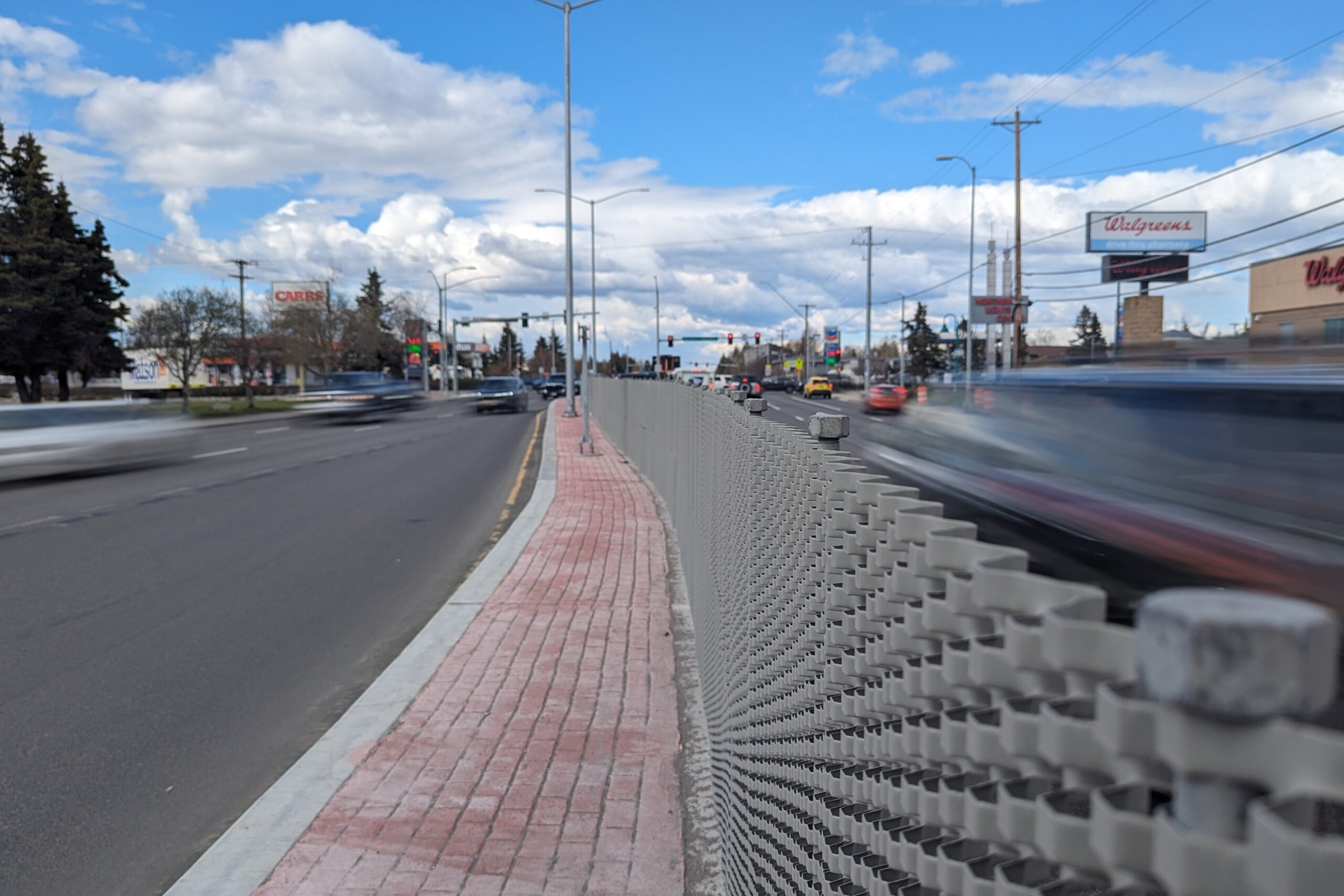
Gene Wilson was hauling a bunch of loaded, reusable grocery bags on Tuesday afternoon as he walked past six lanes of traffic in an unpainted crosswalk of Anchorage’s Minnesota Drive.
“They gotta take it out, man,” he said of the metal fence that runs along the elevated concrete barrier in the center of the state-maintained thoroughfare. “It’s dangerous. … The drivers and the pedestrians really can’t see either side. I don’t know why they got it there.”
Wilson is not alone in his critique of what locals have dubbed “the Minnesota Drive cheese grater,” which was one part of a state Department of Transportation project to install pedestrian lighting and safety improvements in the area. The fence was installed last summer and only runs for one block, between Northern Lights and Benson boulevards.
The community councils for Spenard and Turnagain neighborhoods formally complained about it last year. On Tuesday, the Anchorage Assembly unanimously passed a resolution of its own – which actually uses the cheese grater moniker – that echoes many of the community councils’ grievances.
For various reasons, including safety, aesthetics and local planning issues, they all called on the state Department of Transportation to remove the fence and to do more public outreach.
DOT spokesperson Shannon McCarthy said the fence, which to her knowledge is the only one of its kind in Anchorage, isn’t going away. But the minor drama has triggered DOT to do more outreach going forward on similar projects.
For example, she said the department has a meeting with AMATS, Anchorage’s metropolitan transportation planning organization, coming up.
“And we’re actually going to be looking at the problem areas in Anchorage, and then discuss solutions first, and discuss kind of like what the solution would be and what it would look like in advance,” McCarthy said. “Because oftentimes, it’s the other way around.”
She said aesthetic issues especially could be addressed this way.
McCarthy said federally funded road safety improvements like these often don’t come with much public outreach by default. She said that’s because the physical scopes of these projects are relatively small – within existing state right-of-way – and their timelines relatively short.
“And they’re also very data driven,” she said. “So we know we have a problem there, you know, we have a solution. Boom, we do it. We did not consult regarding aesthetics, and that’s something that we are, moving forward, we’re going to try to change and do.”
The fence runs along a new concrete barrier that’s several feet wide and several feet high down the center of the road. She said both are there to protect the light poles that were installed to make the area safer for pedestrians.
But local officials think the cheese grater actually makes things less safe.
McCarthy said the department’s data collection is ongoing, and there’s a three-year monitoring window to see if the changes are actually effective.
Jeremy Hsieh covers Anchorage with an emphasis on housing, homelessness, infrastructure and development. Reach him at jhsieh@alaskapublic.org or 907-550-8428. Read more about Jeremy here.





